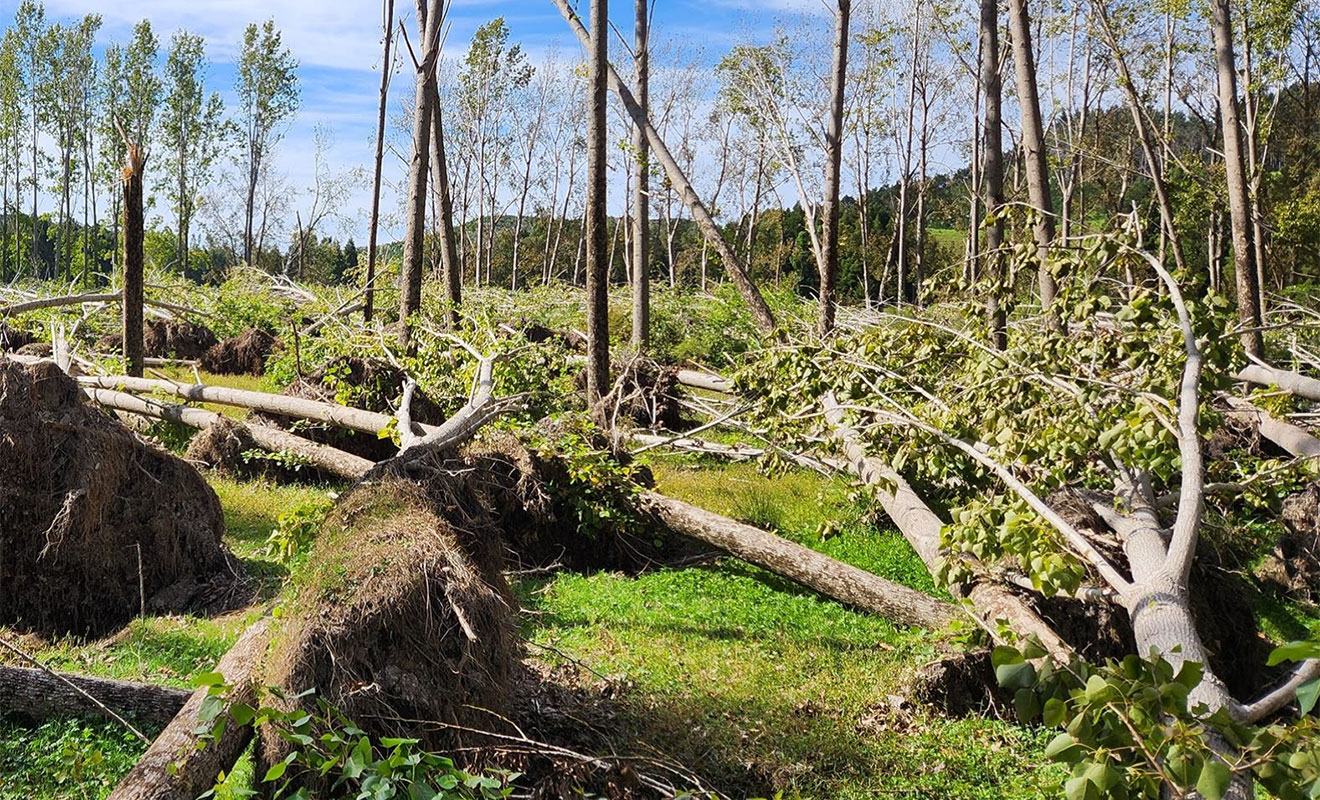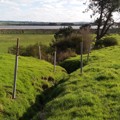Planting poplars and willows for soil conservation
We support landowners with subsidised poplars and willows and a subsidy to help fund planting costs if you are planting NRC poplars or willows for erosion control.
Northland Regional Council grows and supplies poplars and willows for erosion prone land from our nursery in Mata, south of Whangārei.
Poplars and willows grow readily from cuttings, so our trees are supplied as bare stems with no roots or branches. These are commonly referred to as ‘poles’, ‘stakes’ or ‘wands’, depending on their age and length.
Although poplars and willows are not native species, they have a useful role to play in rapidly controlling erosion. They grow quickly and have extensive root systems that bind soil, helping to prevent soil movement and loss on hills and in gullies. The root structure of poplars makes them better suited to hill country, whereas willows are well suited to controlling gully and streambank erosion.
Some native species, such as totara and kanuka, can provide effective erosion control in pastureland. Totara are wind resistant as well as doing a good job of stabilising soil. However, poplars have some advantages over these native species. Totara grow much more slowly than poplars – it takes 40 years or more for a totara to provide the same level of erosion control as a poplar can after only 15 years. Totara and kanuka need to be planted more densely than poplars to achieve the same level of erosion control, which reduces grass growth. They also facilitate the reversion of pasture back into forest, making the planted land less useful to farmers as pasture.
Where appropriate, poplars and willows can be interplanted with natives to provide initial stabilisation on erosion-prone land, creating better conditions for natives to establish. The exotic trees can then be selectively thinned or removed as the forest slowly transitions back to native. We encourage planting with natives and offer funding to support native planting on steep erosion-prone land.
Find out about grants for planting natives on erosion-prone land
When using exotic trees, it’s important to prevent their spread outside of the planting area (sometimes referred to as wilding). All our poplars and willows are modern sterile cultivars that don’t set seed and are propagated by cuttings. This makes them less likely to spread. Our willows are modern varieties with flexible branches that don’t easily break off, reducing the risk of branches falling into waterways and growing downstream. We do not supply crack and grey willows, which are brittle varieties that can cause this problem.
To learn more about the benefits of using poplars and willows to stabilise your land, check out the Poplar and Willow Trust website at: poplarandwillow.org.nz
For many years, NRC’s main tool to manage erosion in pasture has been planting poplar trees. This is because poplars are fast growing and have extensive root systems that help hold the soil in place, allowing erosion prone farmland to stay in pastoral production.
Extreme weather events such as Cyclone Gabrielle can have severe impacts on our environment and the event in February took its toll on some poplar plantings. Land Management staff at NRC toured some areas of Northland where Cyclone Gabrielle caused the most extensive damage to poplar trees, to try to gain a better understanding of why those particular trees were more impacted than others.
Key points noted were that Cyclone Gabrielle was an extreme wind event that came after an unusually wet summer, so the combination of severe winds with highly saturated soil conditions resulted in localised windthrow of poplar. Because poplars grow fast, tend to be planted in wetter areas and were in full leaf at the time the cyclone hit, they appear to have suffered more windthrow than other tree species in Northland.
As Kawa has been the main poplar variety planted in Northland since the 1980s, the majority of windthrow was Kawa. Levels of windthrow varied across the region, but we only visited locations that were extensively damaged. In many locations, Kawa was unaffected by the cyclone.
Cyclones are unpredictable as to where they land and the direction of wind. While localised wind severity and turbulence can’t be planned for, some broad-brush contingencies will increase windthrow resilience, including:
- Poplar forest design should prioritise the main need e.g., erosion control, shade and shelter etc, with timber production secondary.
- Avoid planting Kawa in poorly drained areas with weak soil strength, especially if a plantation crop.
- Set poplar back from drain and stream edges (at least 3-5m from the top edge of the bank).
- When growing poplar for timber, rooted cuttings are planted at up to 1,000 stems per hectare (STP). However, at this stocking trees are tall and thin which increases their vulnerability to windthrow. To reduce the risk of this happening, poplar stands should be thinned down to a final spacing of 250-300 STP (6m x 6m), similar to a radiata regime.
Kawa has been a proven performer for Northland conditions. However, it appears Kawa is more vulnerable to cyclones than other clones such as Veronese. One reason for this may be smaller root plates compared to other poplar varieties. Northland Regional Council is conducting field trials on a range of poplar varieties to determine their suitability for Northland conditions. In addition to rust resistance, possum resistance, quality timber and good form, resistance to windthrow is an important selection criterion for future breeding and selection programmes.
Read the full report: Poplar windthrow following Cyclone Gabrielle

Extensive damage to poplar trees caused by Cyclone Gabrielle.



